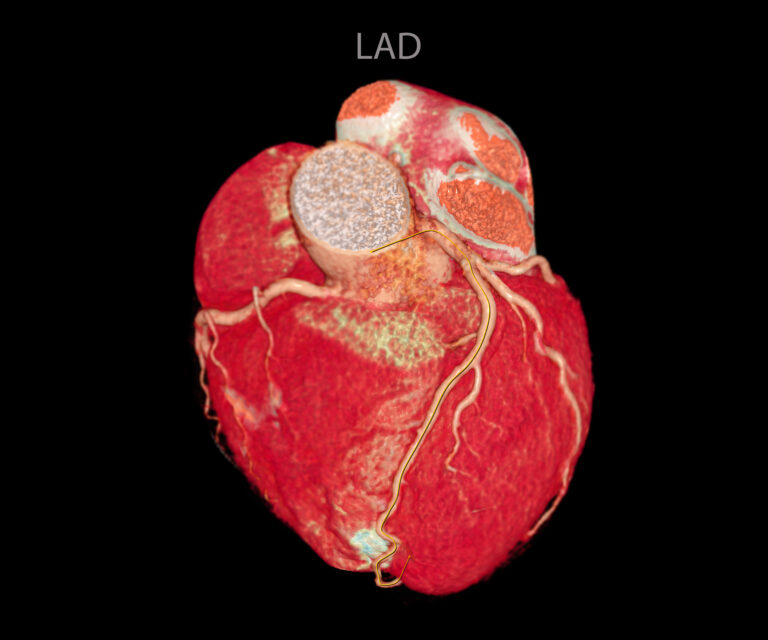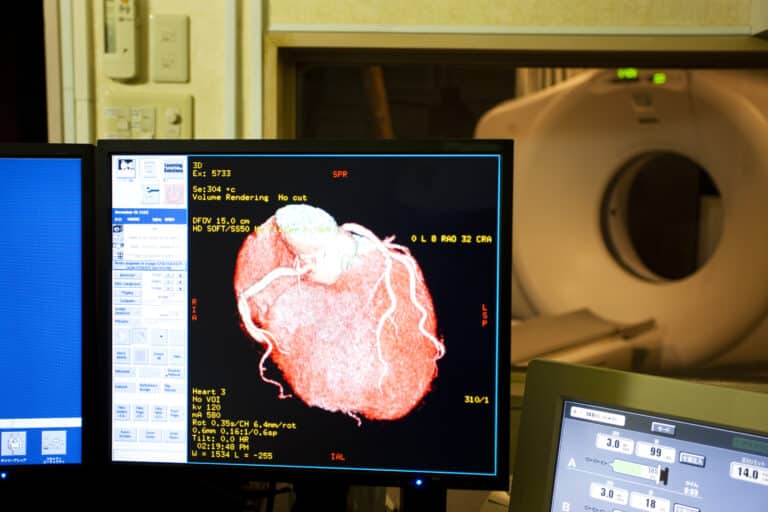Coronary CT Angiography
Coronary CT angiography (CCTA) is a vital diagnostic tool that uses advanced computed tomography technology to visualise the heart’s coronary arteries. This non-invasive procedure is pivotal for the early detection and management of coronary artery disease (CAD), a leading cause of heart-related ailments globally.
CCTA works by combining high-resolution, three-dimensional imaging capabilities with administering a contrast agent, which helps highlight the coronary arteries.
This allows for a detailed assessment of the presence, extent, and severity of plaque build-up within these arteries. Plaque, composed of fats, cholesterol, calcium, and other substances found in the blood, can narrow or block arteries, increasing the risk of heart attacks.
The procedure begins with the injection of a contrast dye into the bloodstream, followed by a series of rapid CT scans. These scans create a detailed image of the heart, coronary arteries, and surrounding structures, enabling cardiologists to accurately detect any blockages or abnormalities.
One of the key advantages of CCTA over traditional angiography is its noninvasive nature, which significantly reduces the risk and discomfort associated with invasive diagnostic methods. It also provides a quicker diagnosis, often requiring only a few minutes for the scanning process, with patients able to resume their normal activities shortly after the procedure.
Furthermore, CCTA is useful in diagnosing CAD and evaluating the effectiveness of various treatments, such as bypass surgery or stenting. By allowing early and accurate diagnosis, CCTA plays a critical role in preventing more severe heart conditions, thus becoming an indispensable tool in modern cardiology.
You are here:
home » Coronary CT Angiography



